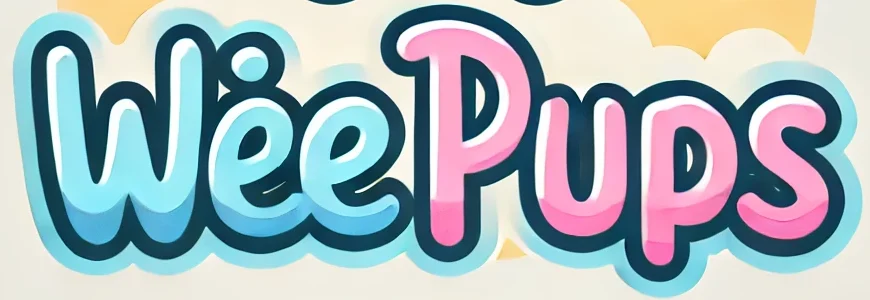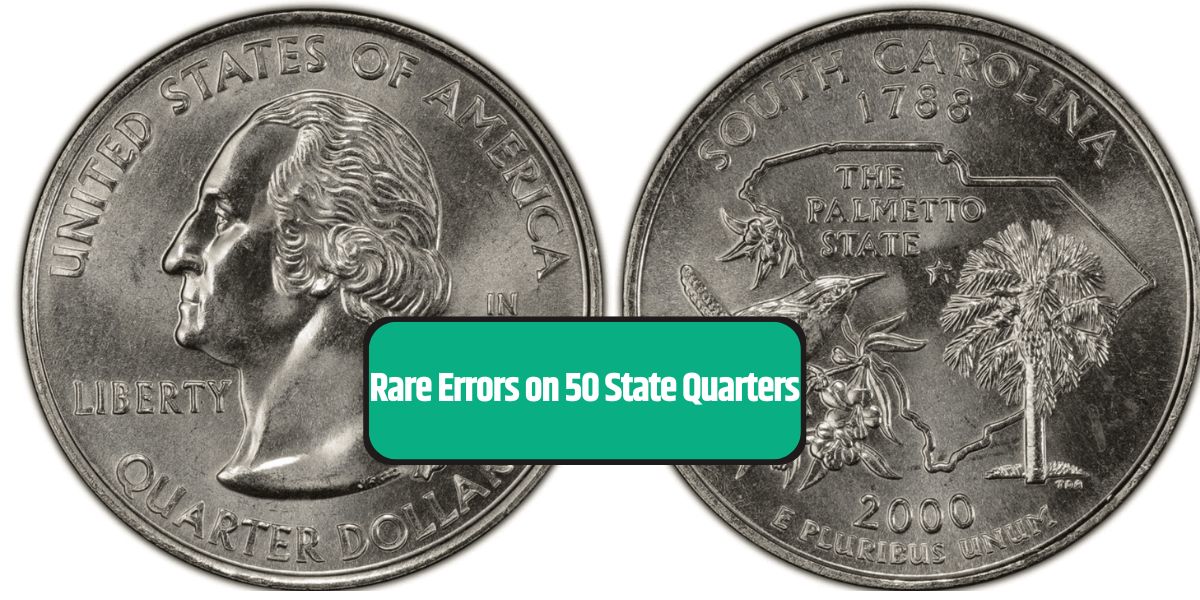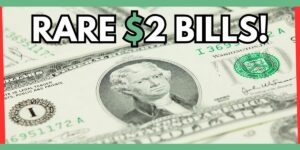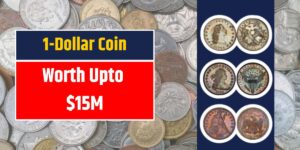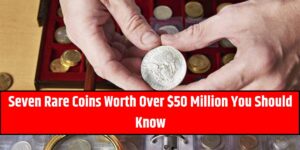The U.S. Mint’s 50 State Quarters program, launched between 1999 and 2008, brought state pride into everyday pocket change and quickly became one of the most popular coin series in American history. Yet, some of these quarters contain rare minting errors that have become prized among collectors, with certain coins fetching well over $1,000 at auction. For numismatists and casual collectors alike, these error coins hold special intrigue due to their rarity and unusual design elements.
Let’s look at some of the most notable error quarters in the series and what makes them so valuable.
Delaware Quarter: The “Spitting Horse” Error
The Delaware quarter, released in 1999, features a fascinating mint error known as the “Spitting Horse.” This error appears as a small die crack extending from the horse’s mouth, giving the appearance that the horse is “spitting.” Collectors prize this error for its quirky visual effect, with high-quality specimens valued at several hundred dollars or more. Depending on the coin’s condition, a “Spitting Horse” Delaware quarter can fetch significant prices in the numismatic market.
Wisconsin Quarter: High and Low Leaf Errors
The Wisconsin quarter, issued in 2004, stands out for its unusual “high leaf” and “low leaf” error varieties. This error appears as an additional leaf on the corn cob depicted in the design and is believed to be the result of a die modification. Because of its rarity and unique appearance, this coin is highly sought after, with top-grade specimens sometimes selling for over $1,000.
Minnesota Quarter: The “Extra Tree” Error
Released in 2005, the Minnesota quarter contains an intriguing “extra tree” error caused by a doubled die. On certain quarters, an additional tree can be seen in the background, giving the design a fuller appearance. The scarcity of this particular error has made it popular among collectors, and high-grade examples can command premium prices in auctions and numismatic circles.
Kansas Quarter: “In God We Rust” Error
The Kansas quarter, minted in 2005, is famous for the “In God We Rust” error, where a grease-filled die obscures the letter “T” in “Trust.” This error results in the phrase appearing as “In God We Rust,” making it a humorous and highly collectible item. Quarters featuring this error, particularly in mint condition, are valued highly by numismatists.
Summary of Notable Error Quarters
Here’s a quick look at these error coins and their estimated values:
| Coin Name | Year Issued | Error Type | Value Range ($) | Rarity Level |
|---|---|---|---|---|
| Delaware | 1999 | Spitting Horse | Up to $500 | Moderate |
| Wisconsin | 2004 | High/Low Leaf | Up to $1,000+ | High |
| Minnesota | 2005 | Extra Tree | Up to $300 | Moderate |
| Kansas | 2005 | In God We Rust | Up to $500 | Moderate |
Why Error Quarters Are So Popular with Collectors
These error coins add a unique layer of value to the 50 State Quarters series, as each mistake represents an accidental piece of American minting history. Part of their allure is the sheer rarity—these quarters are the result of unforeseen variations in the minting process, which makes each one a distinctive collector’s item.
For hobbyists, discovering one of these error quarters in their pocket change or at a local coin shop offers a thrill of discovery. The possibility of finding a valuable error coin, especially one with a quirky or visually distinctive flaw, has made hunting for these rare quarters an exciting experience for many collectors.
FAQs:
What makes an error coin valuable?
Error coins gain value from their rarity, demand among collectors, and the uniqueness of the minting error itself. The more unusual and rare the error, the higher the coin’s potential value.
Are all error quarters valuable?
Not all errors are valuable; their worth depends on the error type, coin condition, and market demand. Generally, the rarer and more noticeable the error, the more valuable the coin becomes.
How can I tell if I have an error quarter?
Examine your quarters carefully for any design oddities, like missing or doubled elements. A magnifying glass can help with finer details, and professional coin grading services can confirm rare errors.
